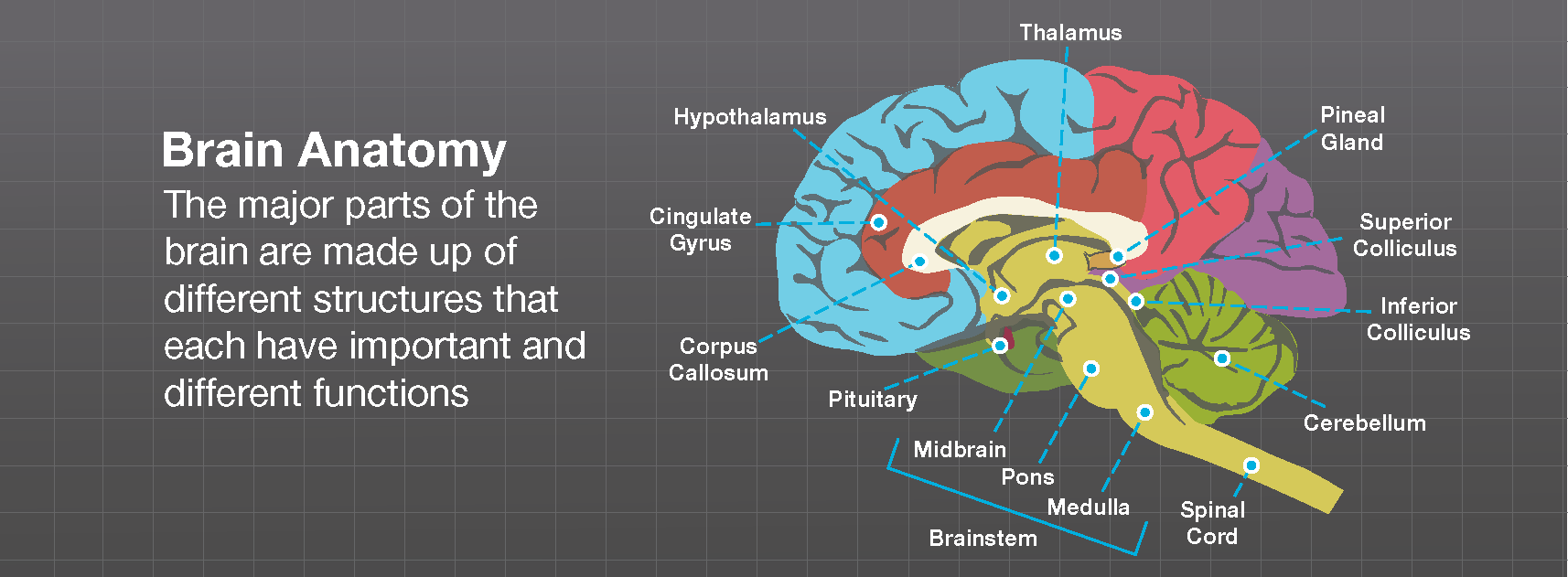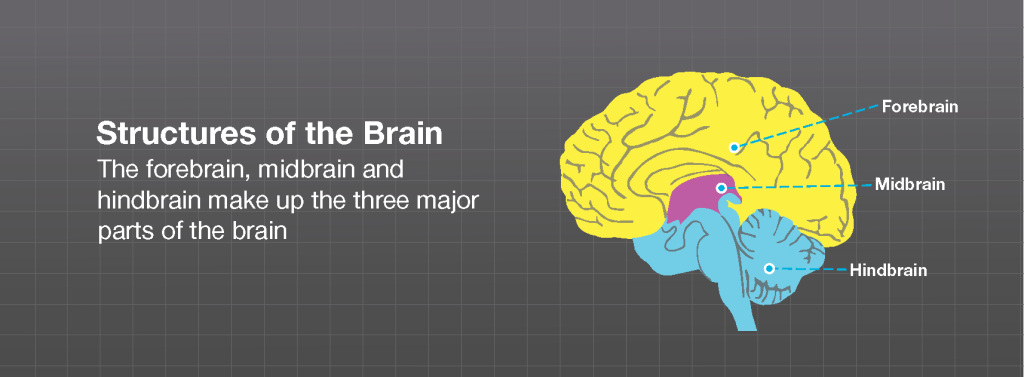
The major parts of the brain are made up of different structures each of which has a unique and important function.
The brain controls both voluntary actions, like talking and running, and involuntary actions like breathing and reflexes. Our emotions, memory and personality as well as our senses—sight, touch, hearing, taste, smell—originate in our brain. The brain works as a single organ but is divided into areas of special expertise and function.

The forebrain, midbrain and hindbrain make up the three major parts of the brain. The structures in the forebrain include the cerebrum, thalamus, hypothalamus, pituitary gland, limbic system, and the olfactory bulb. The midbrain consists of various cranial nerve nuclei, tectum, tegmentum, colliculi, and crura cerebi. The hindbrain, also referred to as the brainstem, is made of the medulla, pons, cranial nerves, and back part of the brain called cerebellum.
Amygdala—part of the limbic system; located at the end of the hippocampus; responsible for the response and memory of emotions, especially fear
Cerebellum—located in the lower area of the brain behind the pons; responsible for balance and coordination of muscles of the body
Cerebral Cortex—the outermost and top layer of the brain; divided into the frontal, parietal, temporal and occiptal lobes; the cerebral cortex is responsible for thought processes like speech and decision making; each different lobe is responsible for different cognitive and processing functions
Corpus Callosum—located above the thalamus, under the cortex; connects the right and left hemispheres of the brain; responsible for communication between the two hemispheres of the brain
Hippocampus—part of the limbic system; located in each temporal lobe; is critical for memory formation
Hypothalamus—located above the pituitary gland and below the thalamus; controls the pituitary gland (which controls all the endocrine glands in the body); responsible for body temperature as well as motivational behaviors like hunger and thirst
Left Brain—left half of the brain; controls right side of the body; typically responsible for tasks that involve logic like science and mathematics, language and reasoning although this may be different depending upon whether the person is right- or left-handed
Medulla Oblongata—located in the lower part of the brain stem; responsible for maintaining vital functions of the body and involuntary actions that sustain life like breathing, blood pressure, heart rate, swallowing and transferring messages from the brain to the spinal cord
Pineal Gland—located deep in the center of the brain, in the midline between the two hemispheres; part of the endocrine system; produces melatonin, which helps maintain circadian rhythm and regulate reproductive hormones; also regulates other endocrine functions and converts signals from the nervous system into endocrine signals
Pons—located above the medulla oblongata; responsible for sending signals or messages between several areas of the brain, especially between the upper and lower parts of the brain; plays a role in sleeping and dreaming
It’s the Left Brain, Right?
Neurosurgeons and scientists have been studying the relationship between a person’s ‘handedness’—whether someone is right or left handed—and ‘right’ and ‘left’ brain dominance and specialization since the mid 1800s.
A better understanding of the correlation between handedness and functional brain specialization would help shed light on many different subjects ranging from dyslexia to neurobiology to brain research to the origins of human language.